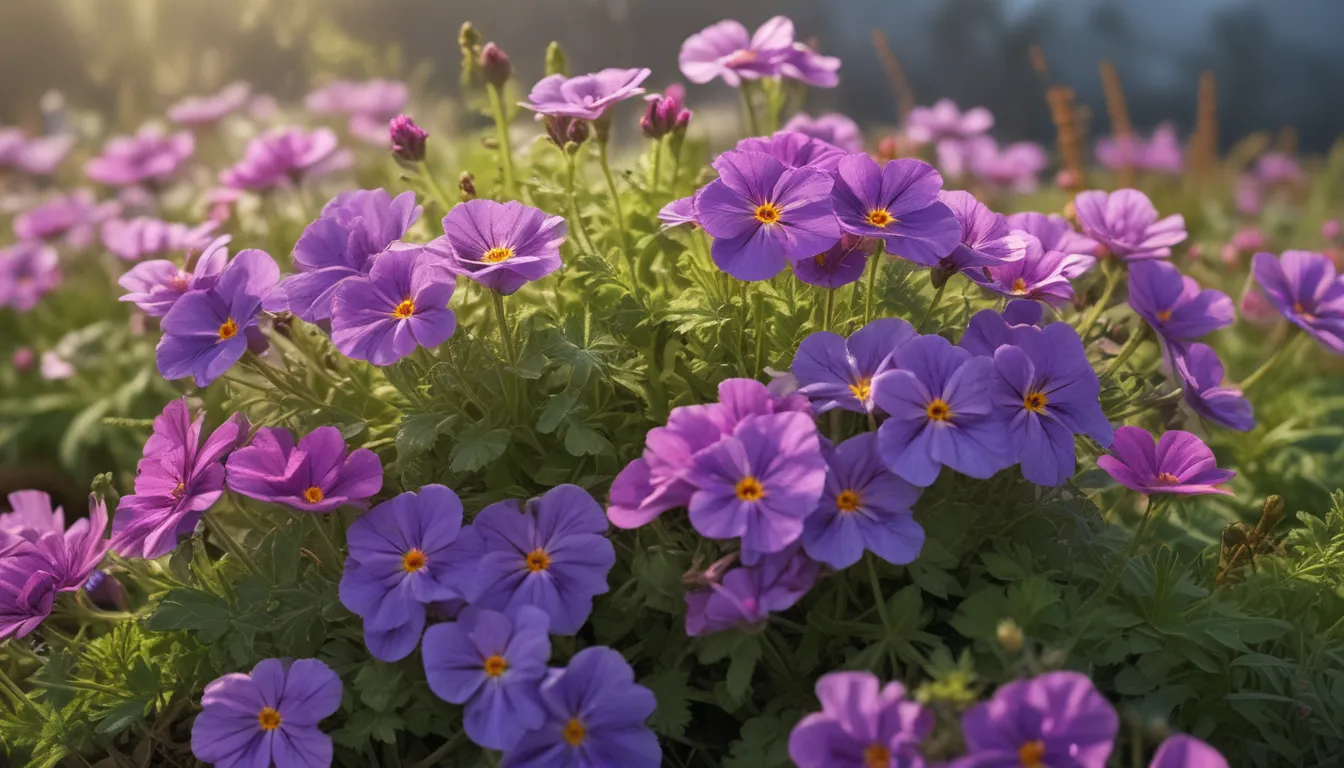The pictures we use in our articles might not show exactly what the words say. We choose these pictures to make you interested in reading more. The pictures work together with the words but don’t take their place. The words still tell you the important facts.
Are you on the lookout for a plant that not only adds beauty to your garden but also thrives in challenging conditions? Look no further than Aubrieta, also known as rock cress. This stunning perennial flower is a gem that every gardener should consider adding to their landscape. With its vibrant blooms, low-maintenance nature, and unique qualities, Aubrieta is truly one of nature's wonders. Let's delve into 13 extraordinary facts about Aubrieta that will inspire and inform you about this remarkable plant.
The Beauty of Aubrieta: A Closer Look at This Stunning Perennial
Aubrieta, scientifically known as Aubrieta deltoidea, is a breathtaking perennial flower that belongs to the Brassicaceae family. Its vibrant colors and low-growing habit make it a popular choice for rock gardens and borders. With various species and cultivars showcasing a range of colors, Aubrieta is a versatile plant that can suit any gardener's preference.
The Origin and Diversity of Aubrieta
Hailing from southern Europe and parts of Asia, Aubrieta has captured the hearts of gardeners worldwide. Its ability to add a burst of color to any landscape has made it a sought-after plant for both experienced and novice gardeners. The genus Aubrieta encompasses several species and cultivars, each offering unique characteristics and colors that make them stand out in any garden.
The Early Spring Bloom of Aubrieta
One of the most remarkable qualities of Aubrieta is its early spring bloom. While other plants are just beginning to wake up from winter dormancy, Aubrieta bursts into a dazzling display of colors, filling gardens with beauty and vibrancy. This makes it a perfect choice for those looking to add a pop of color to their landscape early in the season.
The Low-Growing Habit of Aubrieta
Aubrieta's low-growing habit allows it to form a dense mat of foliage and flowers close to the ground. This makes it an ideal choice for rock gardens, borders, and even for filling in gaps between paving stones. Its cascading growth habit adds a charming touch to any garden or landscape.
Aubrieta’s Attraction to Pollinators
With its vibrant flowers and sweet nectar, Aubrieta acts as a magnet for pollinators such as bees and butterflies. By attracting these beneficial insects, Aubrieta plays a vital role in the ecosystem, aiding in the pollination and reproduction of plants. This makes it a valuable addition to any pollinator-friendly garden.
The Drought-Tolerant Nature of Aubrieta
One of Aubrieta's remarkable qualities is its ability to withstand periods of drought. Its deep-reaching root system allows it to access moisture from the soil, making it a resilient and low-maintenance plant for those with dry or arid climates. This makes it an excellent choice for water-wise gardening.
Growing Conditions for Aubrieta: Soil and Sun Requirements
For Aubrieta to thrive, it requires well-draining soil to prevent root rot. It flourishes in full sun, so it is essential to place it in an area with at least six hours of direct sunlight per day. Good soil drainage and sunlight exposure are key to ensuring the optimal growth and blooming of Aubrieta.
Propagating Aubrieta: A Simple Guide to Growing More Plants
If you're looking to expand your collection of Aubrieta, you can easily propagate it through cuttings. By taking stem cuttings from a healthy plant and rooting them in a well-draining potting mix, you can create new Aubrieta plants and spread their beauty across your garden. This simple propagation method allows you to multiply your Aubrieta plants with ease.
Utilizing Aubrieta as a Ground Cover
Thanks to its low-growing and spreading habit, Aubrieta makes an excellent ground cover. Its ability to form a dense mat of foliage not only adds beauty to bare areas but also helps suppress weed growth. By using Aubrieta as a ground cover, you can create a colorful and vibrant landscape with minimal maintenance.
Aubrieta’s Resistance to Deer and Rabbits
Gardeners delight in plants that are resistant to nibbling pests like deer and rabbits, and Aubrieta fits the bill. Its natural resistance to these animals allows you to enjoy its beauty without the worry of them devouring your beloved blooms. This makes Aubrieta a reliable choice for gardens where wildlife may be a concern.
The Winter Hardy Nature of Aubrieta
Aubrieta's hardiness is another of its impressive qualities, with many varieties capable of surviving freezing temperatures and snow. This resilience makes it a great option for colder climates where other plants may struggle to thrive. By selecting winter-hardy Aubrieta varieties, you can enjoy its beauty year-round.
Embracing the Charm of Aubrieta in Your Garden
With its vibrant colors, hardiness, and ease of care, Aubrieta is a favorite among gardeners for good reason. Whether you're looking for a ground cover or a splash of color in your rock garden, Aubrieta's beauty and versatility make it a standout plant. Its ability to attract pollinators, resist pests, and thrive in various conditions make it a valuable addition to any garden or landscape.
Conclusion: Embrace the Extraordinary Qualities of Aubrieta
Aubrieta, also known as rock cress, is a fascinating plant with numerous extraordinary qualities that make it a standout in any garden. Its vibrant colors, low-maintenance nature, and ability to thrive in challenging conditions have endeared it to gardeners around the world. Whether you're a seasoned gardener or a novice enthusiast, Aubrieta is a plant that is sure to captivate you with its beauty and charm.
FAQs
Q: How do I care for Aubrieta?
A: Aubrieta is relatively low-maintenance and thrives in well-draining soil and full sun. Regular watering, especially during hot and dry periods, will help it flourish.
Q: Can Aubrieta be grown in containers?
A: Yes, Aubrieta can be grown in containers with a well-draining potting mix. Trim it back after flowering to maintain its compact growth.
Q: When does Aubrieta bloom?
A: Aubrieta typically blooms in spring, with some varieties having sporadic bloom periods throughout the summer and fall.
Q: How do I propagate Aubrieta?
A: Aubrieta can be propagated through division or stem cuttings, both methods being successful with proper care and timing.
Q: Can Aubrieta survive in cold climates?
A: Yes, Aubrieta is cold-hardy and can withstand freezing temperatures, making it suitable for USDA hardiness zones 4-9.
In conclusion, Aubrieta is a plant that continues to enchant gardeners with its beauty and resilience. By incorporating this extraordinary plant into your garden, you can enjoy a burst of color, attract beneficial pollinators, and create a vibrant landscape with minimal effort. Let Aubrieta's remarkable qualities inspire you to cultivate a garden that is not only stunning but also beneficial to the ecosystem. Explore the wonders of Aubrieta and create a garden that thrives with beauty and charm.






